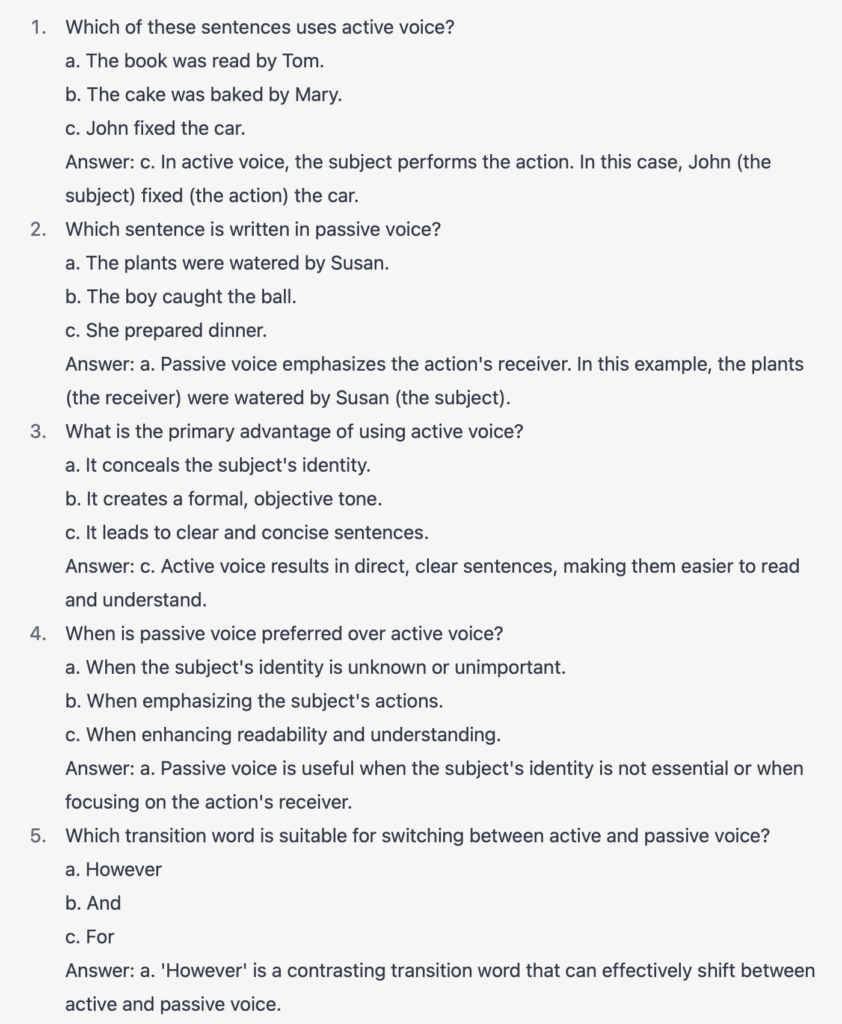Master the art of writing by understanding active and passive voice with our key tips. This essential guide will provide clarity on when to use each voice effectively.
Active Voice Explained
Active voice places the subject at the center of the action. The subject performs the action, resulting in a direct, clear sentence structure. Examples of active voice include:
- The dog chased the ball.
- Sarah baked a delicious cake.
- The teacher explained the lesson.
Benefits of Using Active Voice
Using active voice offers numerous advantages, such as:
- Clear and concise sentences.
- Emphasis on the subject’s actions.
- Easier readability and understanding.
Passive Voice Defined
In passive voice, the focus shifts to the action’s receiver. The subject is acted upon, making the sentence less direct. Here are some examples of passive voice:
- The ball was chased by the dog.
- A delicious cake was baked by Sarah.
- The lesson was explained by the teacher.
When to Use Passive Voice
Although less common, passive voice has its place in writing:
- Emphasizing the action over the subject.
- Concealing the subject’s identity.
- Creating a formal, objective tone.
Transition Words for Active and Passive Voice
Transition words enhance sentence flow and readability. Incorporate them when switching between active and passive voice:
- However
- Meanwhile
- Consequently
Balancing Paragraph Length
A well-structured paragraph typically contains 3-5 sentences. Combine short sentences for balance, and ensure paragraphs follow a coherent theme.
Two Paragraphs for Clarity
Divide complex ideas into a minimum of two paragraphs to maintain reader interest and comprehension.
Simplifying Complex Language
Replace complex words with simpler alternatives for improved readability. For example:
- Utilize -> Use
- Ascertain -> Determine
- Implement -> Carry out
Harness the power of active and passive voice to elevate your writing. Apply these key tips to create engaging, clear, and concise content.
Like our tips? Follow and like us on Facebookfor more valuable writing insights.
Ready to test your knowledge? Give these 10 multiple-choice questions a try and see how well you’ve grasped active and passive voice concepts!





